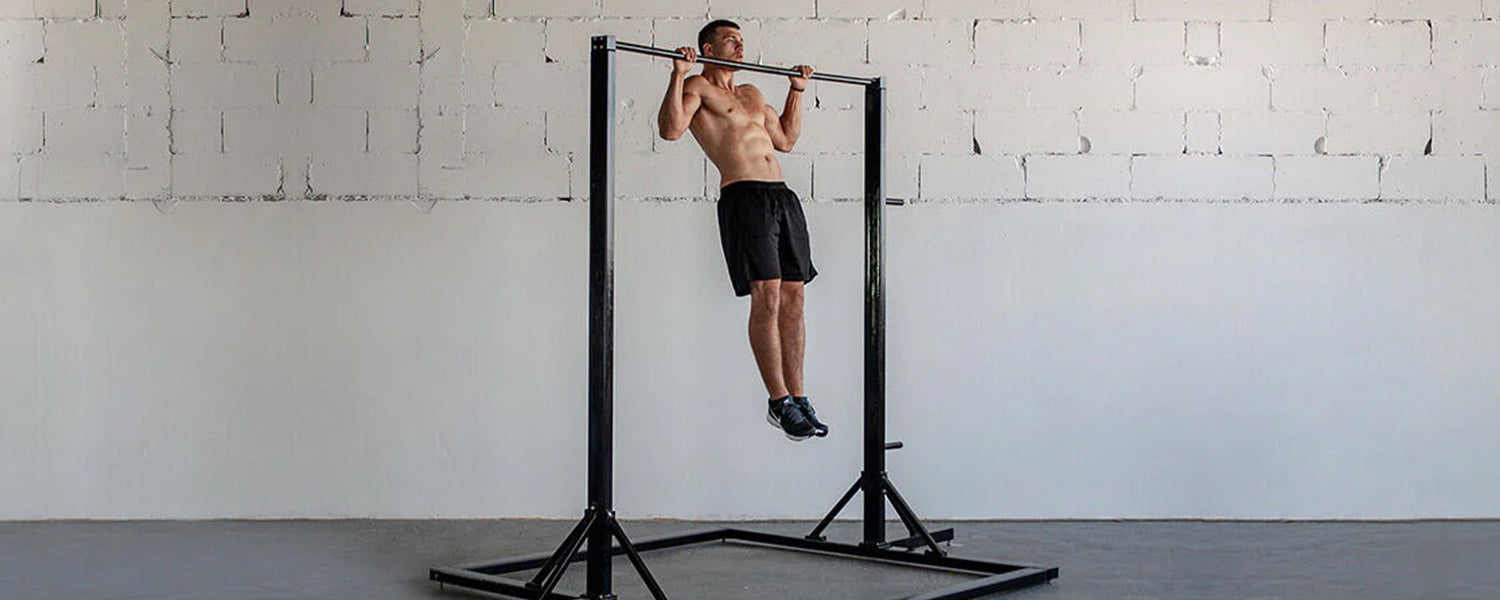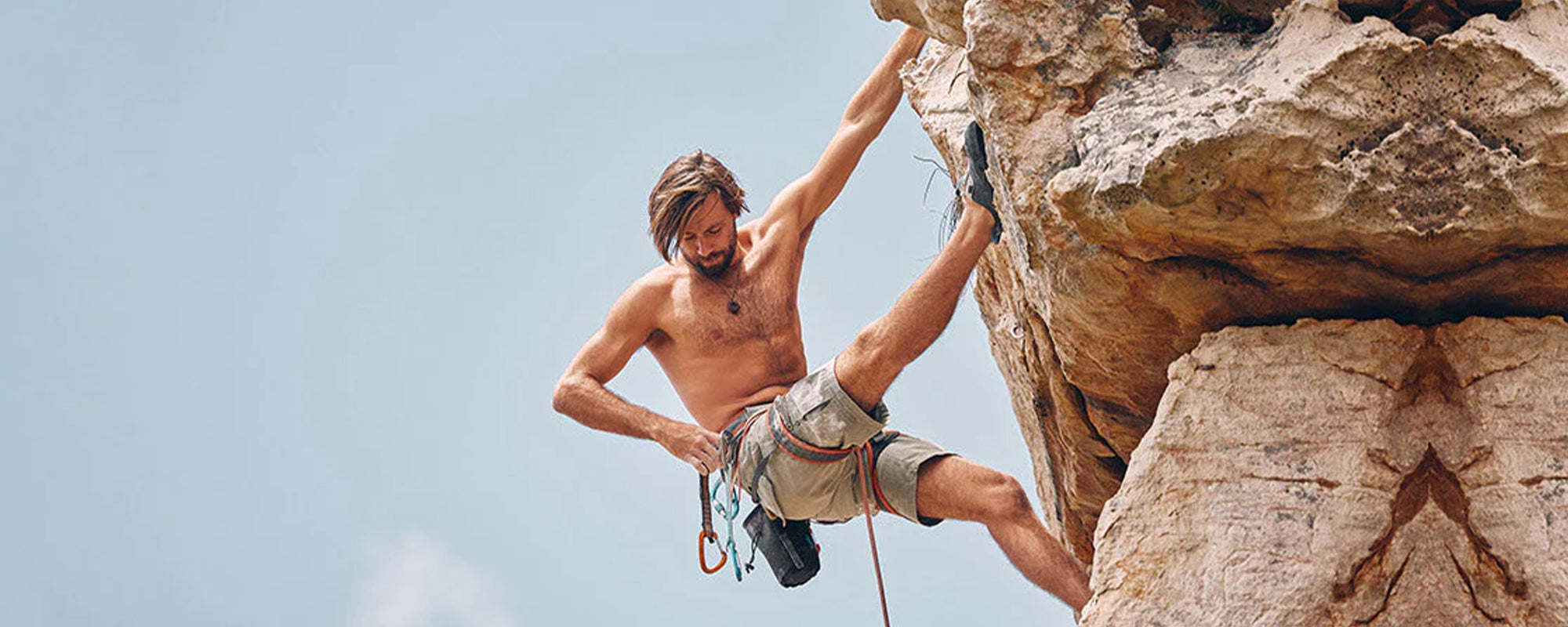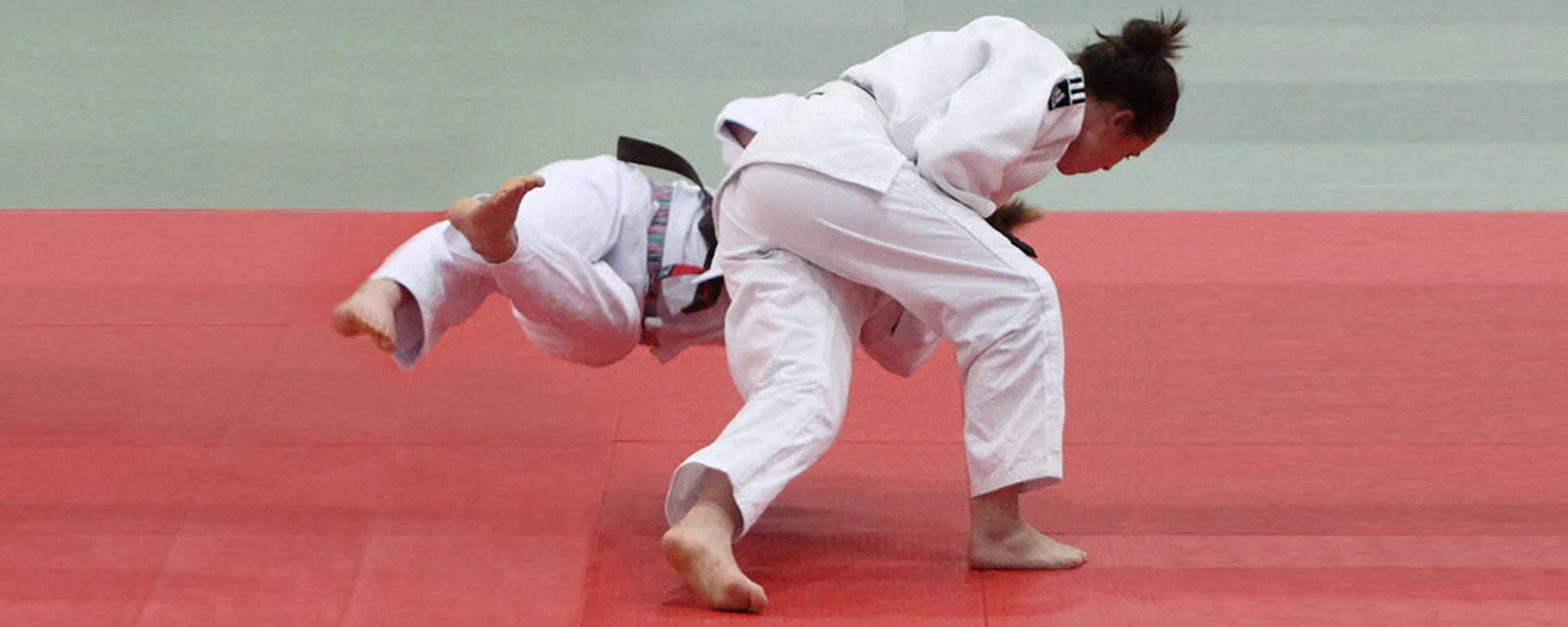Table of content
Pull-Ups are a part of calisthenics exercises. Calisthenic is a form of strength training that helps in gaining strength and endurance. Pull-ups are often incorporated with Jiu-Jitsu training because they help in acquiring strength which improves the Jiu-Jitsu game of a fighter in many ways.
Pull-ups focus on upper body strength. They provide a lot of benefits to a Jiu-Jitsu fighter. It is a closed chain body movement where the practitioner is suspended on a bar by his hands at shoulder width.
They can be hard at times because they require you to lift your whole body with only your arms and shoulder muscles. The individual grabs the bar and lifts himself up. Then he slowly lowers the body by balancing his whole body weight to complete the rep.
1. Reasons To Do Pull-Ups For Jiu-Jitsu
Pull-ups are very beneficial for your Jiu-Jitsu game. They will help you perform better and stay longer on the mat.
1.1. Grip Strength
- Pull-ups help in gaining great grip strength which helps to have a strong Jiu-Jitsu game.
- They improve grips by strengthening and supporting the muscles in the forearms and wrists.
- This improved grip strength helps in Jiu-Jitsu performance to hold your opponent in submissions and always offer a dominant position over your opponent.
- To become good at Jiu-Jitsu, the fighter must have a strong grip strength so that he can hold his opponent in submissions and also get out of the imposed submissions of his opponent.
1.2. Strengthening of Arm and Shoulder Muscles
- Pull-ups work on the upper body muscles which include arm and shoulder muscles.
1.3. Low-Stress Bodyweight Exercise
- Pull-ups are low-stress bodyweight exercises which means that the individual does not have to lift heavy weights to have a huge body weight.
- Jiu-Jitsu does not depend on body weight, still, this weight helps to beat an opponent.
- Balancing your own weight is very important in Jiu-Jitsu. It helps to stabilize while grappling and a stable stance is always desirable for the application and execution of BJJ moves and submission attacks.
1.4. Pull Strength
- There are a lot of pulling movements involved in Jiu-Jitsu. For example, securing a dominant position, takedowns, or pulling your opponent in chokes.
- It trains the biceps, lats, forearms, and grips of a fighter.
1.5. Strengthening of Core Muscles
- Pull-ups work on the upper body muscles. They also strengthen the core muscles of a Jiu-Jitsu fighter.
- Core muscles are very important for Jiu-Jitsu. The fighters specifically work on core muscles which help them to build a good Jiu-Jitsu game.
- By doing pull-ups, the fighters lift their body weight which brings the core muscles in a specific shape.
- Pressure on muscles also makes the flow of myoglobin to muscles easier which maximizes the strength of core muscles.
1.6. A Component of Strength Exercise
- Strength exercises are beneficial to get better at Jiu-Jitsu.
- Strength exercises focus on the overall body strength of the fighter and Pull-ups are focused on strengthening the upper body.
- They make the fighter stronger which helps him to perfectly execute his techniques to subdue his opponent.
- The fighter becomes more fast and sharp in his techniques hence giving no time to his opponent to decipher the move or to get out of it.
- It helps to maximize the competitive advantage of the fighter.
1.7. Full Body Workout
- Pull-ups work as a complete body workout.
- They involve every major muscle of the fighter, especially the core muscles.
- They also warm up the fighter which is much needed before the fight.
- The number of muscles involved in pull-ups is enough to pump up the whole body.
1.8. Increased Flexibility
- As pull-ups work on the muscles of the Jiu-Jitsu fighter while increasing flexibility.
- During the fight, increased flexibility helps the fighter to move freely in all directions.
- The free movement allows the fighter to easily apply his moves.
- Increased flexibility ensures the successful execution of submissions and escapes.
- This becomes beneficial as the fighter can easily escape the opponent’s submissions and takedowns.
1.9. Low Injury Risk
- Having increased flexibility and endurance lowers the risk of injury.
- Jiu-Jitsu can be a dangerous sport if the fighter’s body is stiff because then it will not be able to handle the submissions or takedowns.
- By doing pull-ups, the fighter’s body gets accustomed to exercise which keeps the whole body's muscles engaged.
- In pull-ups the fighter is not lifting additional weights, rather he is lifting his own body weight.
- This gives him a better understanding of his own body and he gets to know how to keep his muscles safe from getting strained.
- When the muscles get flexible due to exercises, they do not easily fall for any injury.
- Injuries can decrease the flexibility and endurance of a fighter as his movements become very limited.
1.10. Good Body Posture
- Another advantage of doing pull-ups for Jiu-Jitsu is that it provides a great body posture.
- The spine of the fighter stays in a strong position which keeps the kinetic chain intact.
- Strengthening of core muscles keeps the spinal cord and the discs in the lower back strong and in a healthy position.
- Powerful, accurate, fast and smoothly executed techniques can only be applied with a strong and great body posture.
2. Pull-Up Exercises for Jiu-Jitsu
Following are some pull-up exercises that enhance the Jiu-Jitsu game of a fighter.
2.1. Gi Pull-Ups
- These pull-ups are done with the help of Gi.
- The fighter drapes his Gi over the pull-up bar so that the collar hangs on both sides of the bar.
- He grips the collars hanging on both sides and performs pull-ups.
- He then moves his head to either side of the bar at the top.
- These pull-ups enhance the grip strength of the fighter.
- It is the foremost demand of Gi-Jiu-Jitsu to have a solid grip strength so that the fighter can grab the opponent’s Gi and dominate the fight.
For more information, you can watch the video.
2.2. Chin-Ups
- Chin-ups increase strength especially in the upper arms.
- The fighter only needs a solid bar.
- Chin-ups focus on the biceps resulting in increased upper-body strength.
- The difference between Chin-ups and pull-ups is that chin-ups are performed with the palms in an upward direction while pull-ups are performed with the palms in a downward direction.
- The muscles involved in chin-ups are the biceps brachii, brachioradialis, posterior deltoid, and deep spinal stabilizers.
- It also improves the grip strength of the fighter.
- The fighter’s biceps have an active involvement.
- Not only do the biceps become stronger but also greater in size.
- Chin-ups are very helpful for the execution of Loop Choke and Cross Choke.
- For beginners, an inverted row is recommended as it will build the fighter’s basic knowledge of performing chin-ups.
- These inverted rows can be exercised 2-3 times a week and 3-5 sets of 6-10 reps must be performed.
For more information, you can watch the video.
2.3. Towel Pull-Ups
- Towel pull-ups are very efficient for building grip strength faster.
- For towel pull-ups, the fighter needs two towels.
- He hangs the towel from the pull-up bar.
- He then grabs the towels with his thumbs facing up and starts his pull-ups.
- Biceps and back muscles are actively involved and strengthened by this exercise.
- Using a thicker towel will maximize the grip strength of the fighter.
For more information, you can watch the video.
2.4. Fat Bar Pull-Ups
- These pull-ups are conducted over a fat bar.
- Fat bar pull-ups work on the grip strength of the fighter.
- The grip strength depends on the pull-up bar. It is because the fatter the bar, the harder it is to grip.
- It can also reduce the number of pull-ups at the start but working out on a fat bar will increase the grip strength of the fighter which is very important in Jiu-Jitsu.
- The fighter grabs a fat bar with his thumb around the bar.
- He performs the pull-up by pulling his body up and his elbows to his ribs and keeping a wide chest position.
For more information, you can watch the video.
2.5. Neutral Grip Chin-Ups
- It is a variation of normal chin-ups.
- Neutral Grip chin-ups work on primary and secondary groups of muscles.
- They enhance the strength in the upper body such as the forearms, latissimus dorsi, or lats.
- In the neutral grip chin-up, both palms of the fighter face each other.
- The fighter changes his grip to a neutral position which is why it is called a neutral grip chin-up.
- The handles of the pull-up bar are parallel to each other where the fighter performs this exercise.
- The fighter performs the chin-up by bringing his chin over the bar and not leaning his back backward.
For more information, you can watch the video.
2.6. Eccentric/Negative Pull-Ups
- These pull-ups progressively increase the tension on the targeted muscles which results in gaining strength and muscle growth.
- These pull-ups focus on the descending phase of the pull-up.
- It then creates a unique eccentric contraction in the muscles.
- They are also called negatives.
- It is basically the part of the pull-up where the fighter slowly lowers himself down from the pull-up bar.
- This pull-up allows the fighters to do more than just a normal pull-up.
- It is because when the fighter lowers himself down, he can stretch more than a normal pull-up.
- The fighter can do negative pull-ups more than normal pull-ups because it does not require much energy and the fighter’s muscles do not get tired easily.
For more information, you can watch the video.
2.7. Pull-Ups with Isometric Holds
- These pull-ups strengthen the upper body of a fighter which makes him perform better at his Jiu-Jitsu game.
- The Jiu-Jitsu fighter grabs the pull-up bar by applying a personated grip.
- A personated grip is a grip in which your palms are facing away from your body.
- The fighter jumps and pulls the pull-up bar at the same time.
- In this way, his upper body muscles are engaged, especially the biceps and the core muscles.
- The Jiu-Jitsu fighter holds this position for 10-40 seconds and performs 4 sets.
- It strengthens the muscles of a Jiu-Jitsu fighter.
For more information, you can watch the video.
2.8. Single-Arm Pull-Up
- These pull-ups enhance the strength in the arms of the fighter and also help in building more muscles.
- It makes the fighter's arms strong enough to initiate and execute takedowns and submissions successfully.
- The fighter starts the single-arm pull-up by doing a one-arm scapula shrug.
- The fighter completes 1 set of pull-ups on both arms with 5 pull-ups on each arm.
- In this pull-up exercise, the fighter is contracting his scapulas. In this way, pressure is exerted which results in the strengthening of upper body muscles.
- The fighter breaks a single-arm pull-up into different parts such as switching one arm pull-up hold, jumping one arm pull-up, pull-up one arm negative, jumping one arm negative pull-up, and assisting one arm pull-up. The single-arm pull-up is broken down into the above parts to make it easy for the Jiu-Jitsu fighter.
For more information, you can watch the video.
3. FAQs
3.1. Can Muscle be Gained from Pull-Ups?
To strengthen muscles, Jiu-Jitsu fighters can do pull-ups. Pull-ups not only make muscles stronger but also increase size and strength. It makes the execution of submissions and takedowns easier.
3.2. How Pull-ups Increase Grip Strength in Jiu-Jitsu Fighters?
While doing pull-ups fighters have to lift their complete body weight on their arms and shoulders. They also have to balance their body weight so that they do not fall. It builds their grip strength which in turn helps the fighters in their Jiu-Jitsu grappling.
3.3. Why Do Jiu-Jitsu Fighters Do Pull-Ups?
Jiu-Jitsu fighters perform pull-ups as a part of strength training to build their muscles and grips. It eventually helps them to get better at their Jiu-Jitsu game. It not only builds stronger muscles but also increases their size. Though size does not matter a lot in Jiu-Jitsu, it is very helpful for dominating your opponent.
4. Conclusion
Jiu-Jitsu is a grappling sport that requires great grip and core strength to have a dominant position over your opponent. To become better at Jiu-Jitsu, fighters adopt pull-up exercises. These pull-up exercises enhance strength and flexibility in the fighter allowing him to execute his techniques swiftly and easily.
Photo Credit: @madbarz













Leave a comment
This site is protected by hCaptcha and the hCaptcha Privacy Policy and Terms of Service apply.